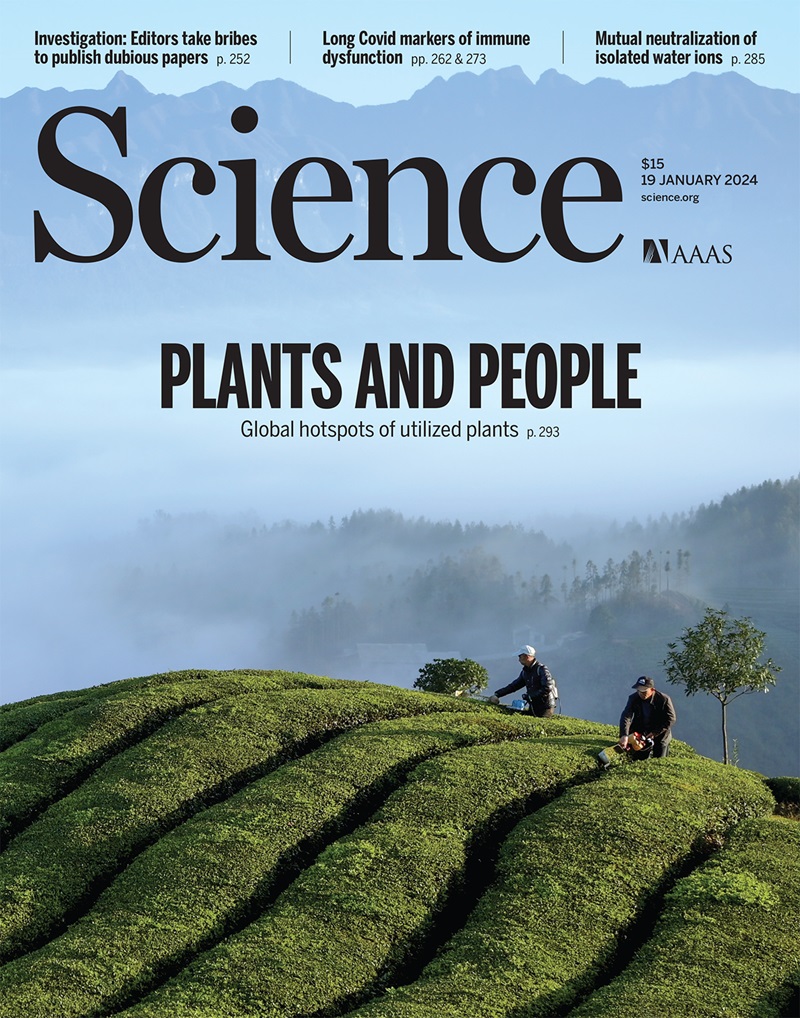A molecular mechanism for bright color variation in parrots
IF 44.7
1区 综合性期刊
Q1 MULTIDISCIPLINARY SCIENCES
引用次数: 0
Abstract
Parrots produce stunning plumage colors through unique pigments called psittacofulvins. However, the mechanism underlying their ability to generate a spectrum of vibrant yellows, reds, and greens remains enigmatic. We uncover a unifying chemical basis for a wide range of parrot plumage colors, which result from the selective deposition of red aldehyde- and yellow carboxyl-containing psittacofulvin molecules in developing feathers. Through genetic mapping, biochemical assays, and single-cell genomics, we identified a critical player in this process, the aldehyde dehydrogenase ALDH3A2, which oxidizes aldehyde psittacofulvins into carboxyl forms in late-differentiating keratinocytes during feather development. The simplicity of the underlying molecular mechanism, in which a single enzyme influences the balance of red and yellow pigments, offers an explanation for the exceptional evolutionary lability of parrot coloration.
鹦鹉亮色变异的分子机制
鹦鹉通过一种名为 "鹦鹉富勒烯 "的独特色素产生令人惊叹的羽毛颜色。然而,它们产生鲜艳的黄色、红色和绿色的能力背后的机制仍然是个谜。我们发现了多种鹦鹉羽色的统一化学基础,这些羽色是红色醛基和黄色羧基鹦鹉热素分子在发育羽毛中选择性沉积的结果。通过基因图谱、生化试验和单细胞基因组学,我们确定了这一过程中的一个关键角色--醛脱氢酶 ALDH3A2,它能在羽毛发育过程中将晚分化角质细胞中的醛型鹦鹉热素氧化成羧基形式。这种由单一酶影响红色和黄色色素平衡的基本分子机制非常简单,它为鹦鹉色彩在进化过程中的特殊不稳定性提供了一种解释。
本文章由计算机程序翻译,如有差异,请以英文原文为准。
求助全文
约1分钟内获得全文
求助全文
来源期刊

Science
综合性期刊-综合性期刊
CiteScore
61.10
自引率
0.90%
发文量
0
审稿时长
2.1 months
期刊介绍:
Science is a leading outlet for scientific news, commentary, and cutting-edge research. Through its print and online incarnations, Science reaches an estimated worldwide readership of more than one million. Science’s authorship is global too, and its articles consistently rank among the world's most cited research.
Science serves as a forum for discussion of important issues related to the advancement of science by publishing material on which a consensus has been reached as well as including the presentation of minority or conflicting points of view. Accordingly, all articles published in Science—including editorials, news and comment, and book reviews—are signed and reflect the individual views of the authors and not official points of view adopted by AAAS or the institutions with which the authors are affiliated.
Science seeks to publish those papers that are most influential in their fields or across fields and that will significantly advance scientific understanding. Selected papers should present novel and broadly important data, syntheses, or concepts. They should merit recognition by the wider scientific community and general public provided by publication in Science, beyond that provided by specialty journals. Science welcomes submissions from all fields of science and from any source. The editors are committed to the prompt evaluation and publication of submitted papers while upholding high standards that support reproducibility of published research. Science is published weekly; selected papers are published online ahead of print.
 求助内容:
求助内容: 应助结果提醒方式:
应助结果提醒方式:


